Denmark is a land that carefully chooses its words, making them in a certain sense able to make us imagine and reflect. A parable that goes from the king of the fairy tale, Hans Christian Andersen to the contemporary artist Johan Deckmann, who arrives from the world of psychology to that of the visual arts, through convincing reflections where thought is painted in the form of a letter. We talked to him on the occasion of his last Italian solo show in Como.
Federica Fiumelli: “Reading between the lines”, your solo exhibition at the G / ART / EN exhibition space in Como curated by Angeliki Kim Jonsson, sums up two points of your artistic research, irony and language. What prompted you to choose language as the protagonist of your artworks?
Johan Deckmann: I have been painting and making sculptures since I was very young without ever really finding my expression. My mother was a painter, she painted people and flowers, and I admired many of the American pop artists, so I somehow expected that my own works would also become figurative or at least be based on shapes and forms. Nevertheless, I could never fully identify with being a painter in the classical sense. But at the same time I wrote poems, music and many lyrics, which struck me very easily. When I got older, I studied psychology and meanwhile adapting these principles through literature and practical training I continued to make art. In my practice I found myself approaching my patients in a very simplistic, honest, to-the-core and almost minimalistic way. And one day, while reading, I had some titles in my head and realized that words, in a very clear and direct manner, would become my artistic tool. Just like poems or song lyrics or words written just for you that speak to your heart. A little gathering of words that either describes you or makes you imagine or even words to live by. But this time as visual art for everyone to see made by a psychotherapist to bring you awareness.
I read that growing up in an antique shop in Copenhagen made you fall in love with antiques right away, especially books, which together with language are in fact the protagonists, the bodies of your works. What relationship do you have with writing and reading outside the work of art? Do you have any books from the history of literature that influenced you?
Professionally I’m partly influenced by the writings and methods of Frederick S. Perls, Carl Rogers and Alice Miller. Regarding literature in general I like classical writers like Hesse, Auster, Dostoevsky, Kierkegaard, Kafka and also Alan Watts and some of the beat poets. In addition, I got my first real book published in 2018.
We talked about literary influences. Speaking instead of art history, if you had to choose three artists who inspired you or to whom you looked with passion, which are they?
I am not as inspired by other artists as much as I am by the art of psychology. But I feel a strong affiliation with Lucio Fontana, Robert Rauschenberg and Louise Bourgeois. I also admire artists like Alberto Burri, Bram Bogart and Richard Serra.
What relationship do you have with art criticism and the art system?
I’m not yet that experienced in the art world. Right now I’m more like an immigrant from the world of psychology. But I know how I like art to be experienced. I do my very best to see an artwork simply as it is without prejudices and personal judgement regardless of who made it, their gender, age, nationality or background. Just like when I listen to good music – it simply has no relevance whatsoever to me what color the artist’s skin is or whether the artist is an academic or not. If it works for me, it works for me. I experience for myself that my works are being seen this way and I am very grateful for that.
Your works are iconic, they come clear to the eye of the observer and this undoubtedly helps a lot in immediate contemporary communication especially on social media, in this case Instagram, the ideal platform for images, where you have an excellent following. What relationship do you have with social media and how do you think they are positive or negative for art and artists?
I’m very thankful for the opportunities that become available via social media. I absolutely believe that social media benefits art and artists within all areas from the highly acclaimed artist to the completely unknown artist. If you want to make a living as an artist you also, in most cases, need to be an entrepreneur and self-staging to some degree and that’s when social media becomes a very useful tool. I see my relationship with social media – in particular Instagram – like a very well-functioning long-distance relationship.
If you were to tell your art to someone who does not yet know you, what would you say?
My work is an exploration and a portrait of human behavior meant to activate my audience on a personal level. If you look at my work, you are in therapy. But on the other hand, I believe there are no limits for what can work therapeutically on you. Like in therapy, I aim for a revelation of the true self and to motivate personal responsibility. Half of my work takes place in the imagination of my viewer. Edward Hopper once said “If you could say it in words, there would be no reason to paint”. So, despite that I also work on canvases, I guess that, in the context with Hopper’s quote, I must conclude: “I say it in words, so I have no reason to paint”.
Info:
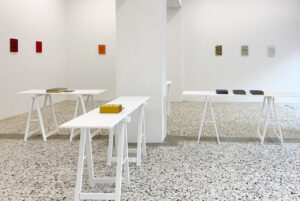 Johan Deckmann, Reading Between the Lines, installation View, courtesy the artist and the gallery G_ART_EN
Johan Deckmann, Reading Between the Lines, installation View, courtesy the artist and the gallery G_ART_EN
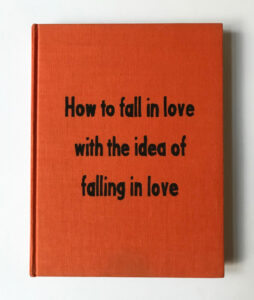 Johan Deckmann, The Idea of Falling in Love, 2019
Johan Deckmann, The Idea of Falling in Love, 2019
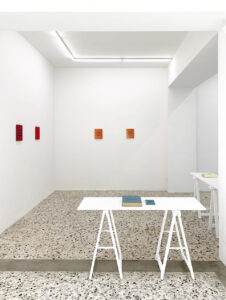 Johan Deckmann, Reading Between the Lines, installation View, courtesy the artist and the gallery G_ART_EN
Johan Deckmann, Reading Between the Lines, installation View, courtesy the artist and the gallery G_ART_EN
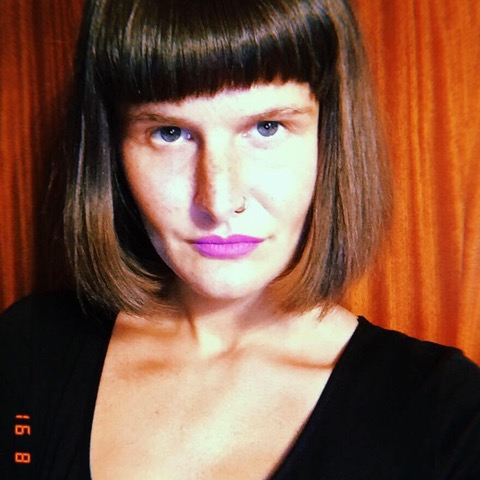
(1990) Graduated at DAMS in Bologna in Visual Arts with a thesis on the relationship and the paradoxes that exist between photography and fashion, from Cecil Beaton to Cindy Sherman, she specializes at the Academy of Fine Arts in Bologna in the two-year course in art teaching, communication and cultural mediation of the artistic heritage with a thesis on the historical-critical path of Francesca Alinovi, a postmodern critique. Since 2012 she has started to collaborate with exhibition spaces carrying out various activities: from setting up exhibitions to writing critical texts or press releases, to educational workshops for children, and social media manager. She has been collaborating since 2011 with various magazines: Vogue online, The Artship, Broken Fracture, Wall Street International Magazine, Forme Uniche Magazine.




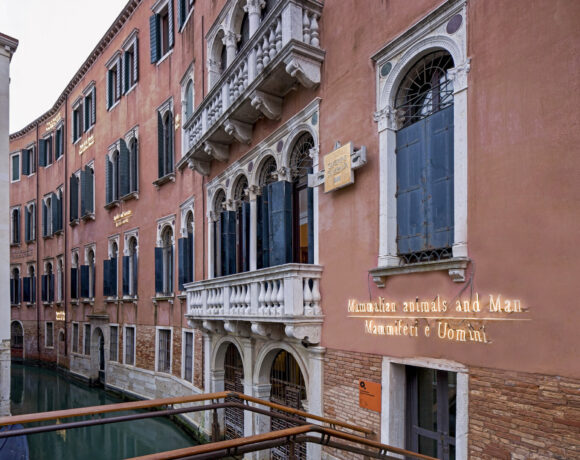

NO COMMENT